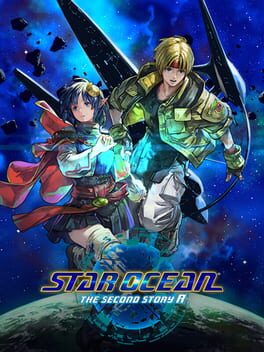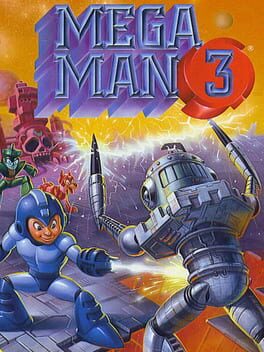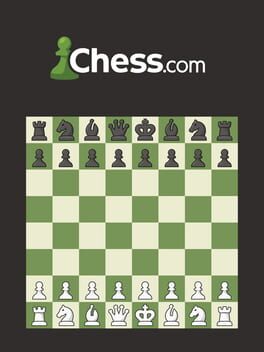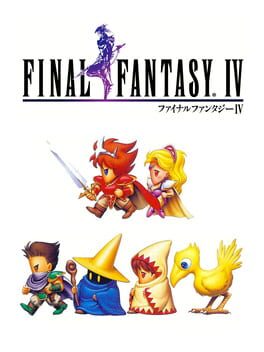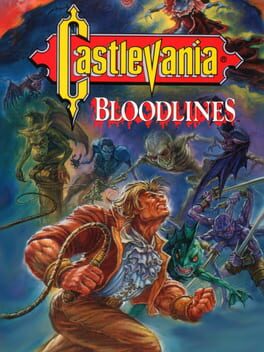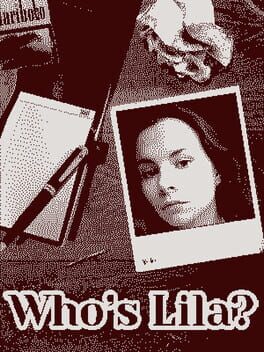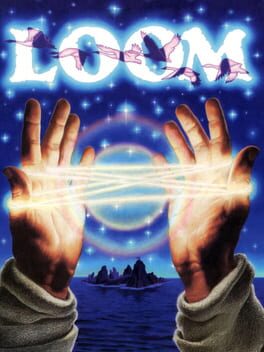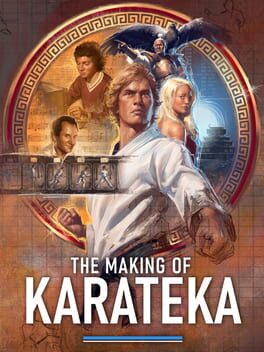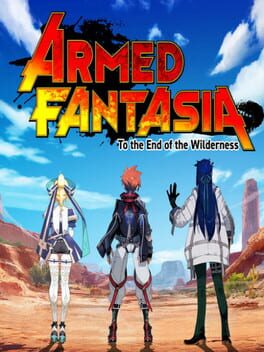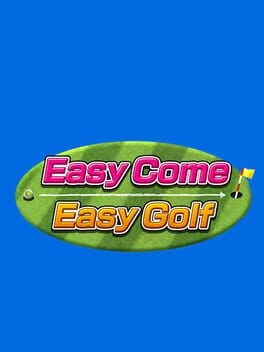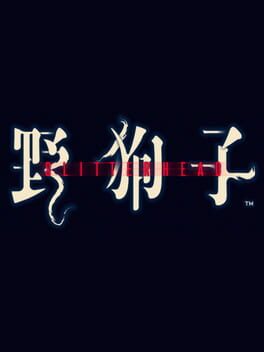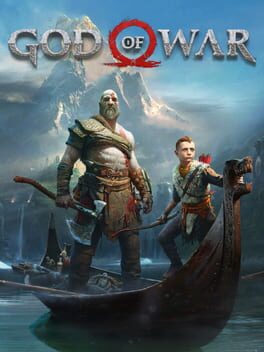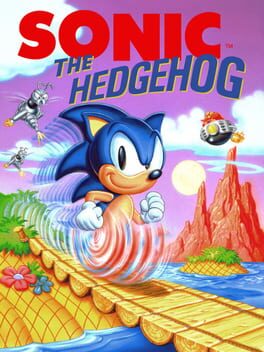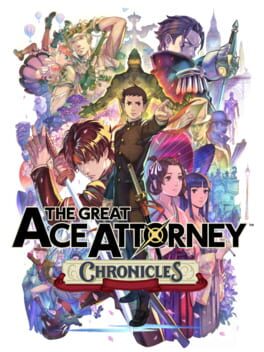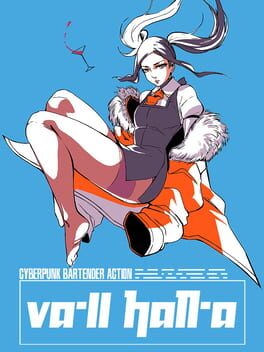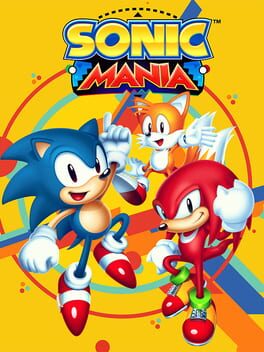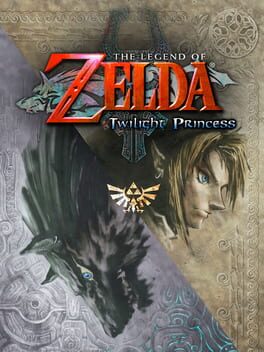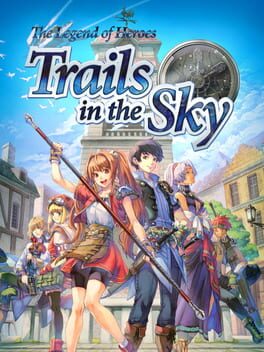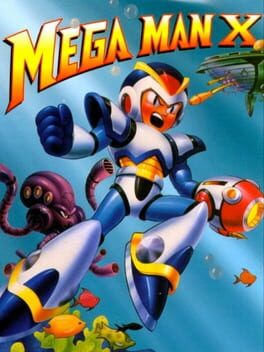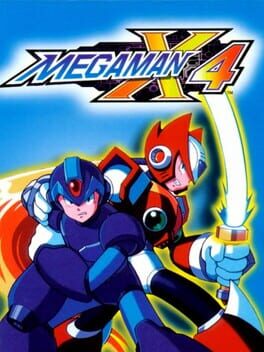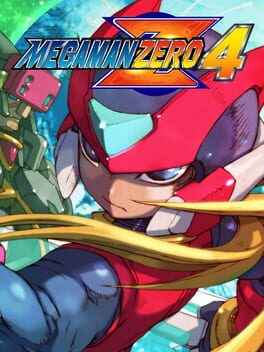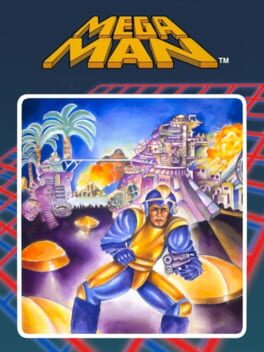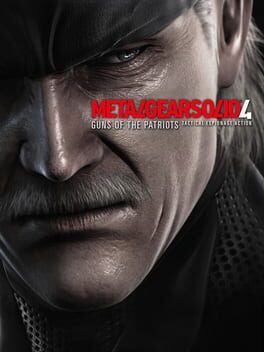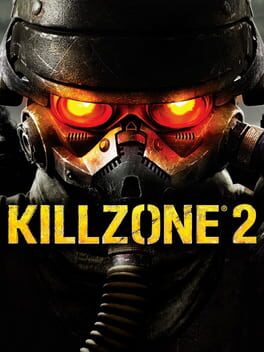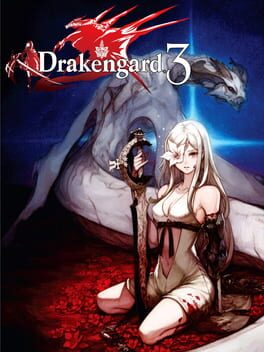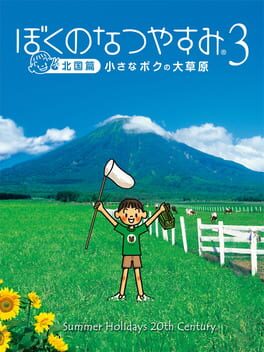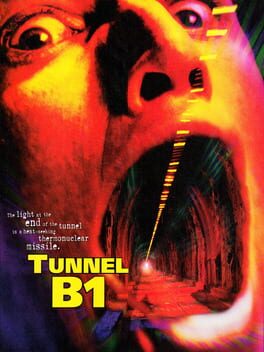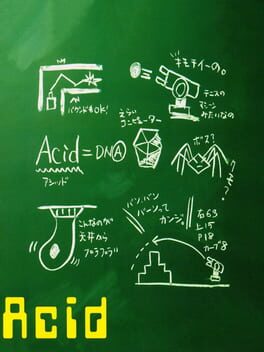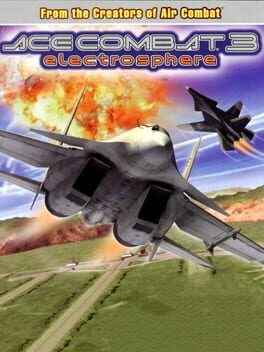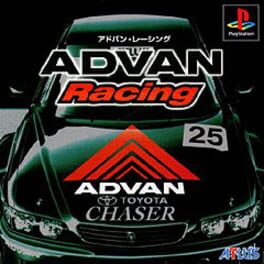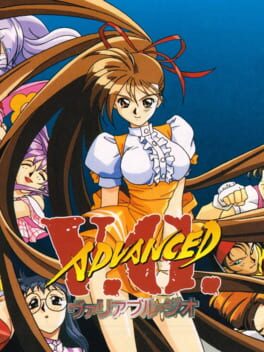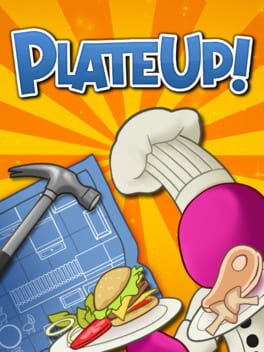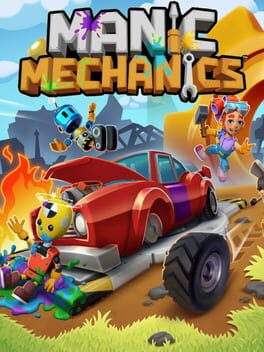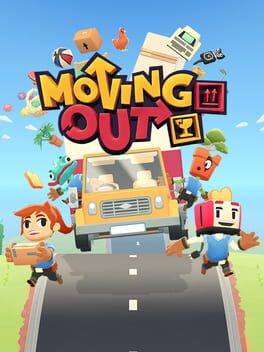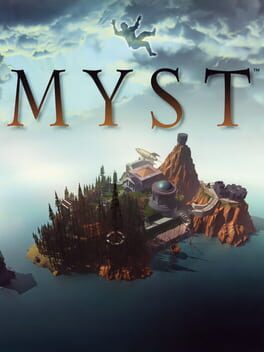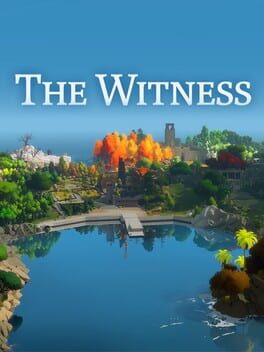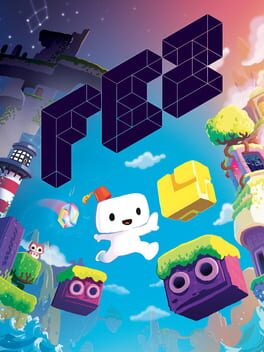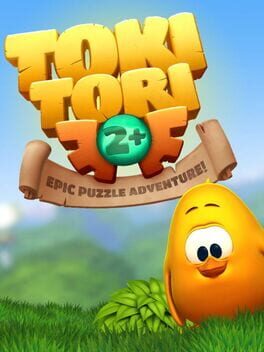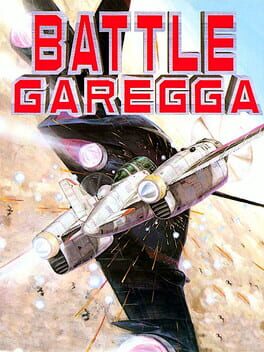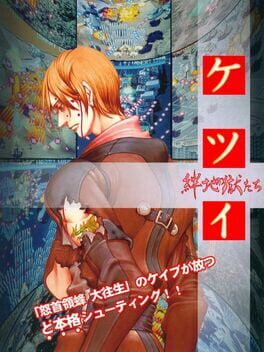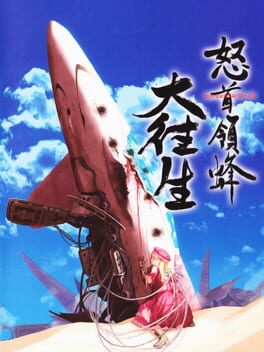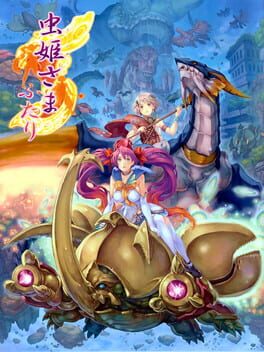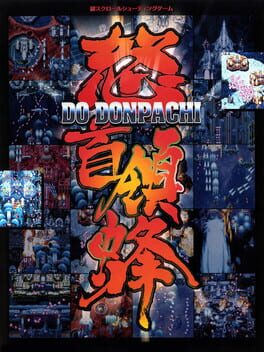HANBAGA
BACKER
86 reviews liked by HANBAGA
In the span of a week or so, I went from an apathetic “I should try that out sometime” stance on Star Ocean into a giddy little man grinning ear to ear with love because I took that plunge after all this time and was rewarded handsomely. Star Ocean Second Story is such a wonderful video game and I couldn’t be happier.
It’s been a while since I have played a game with a story that feels so vividly “golden age of JRPG”. The main plot kicks off and is so endearing and exciting, in large part due to the outstanding and incredibly lovable dual protagonists. I love the story setup, and even just in my first play session was fully on board with everything being presented, but that momentum just continues for the entire game. It paints an incredibly vibrant and detailed picture of the world of Star Ocean, yet is simultaneously paced brilliantly and always serves to grow the characters just as much. Midway through the game has a twist that brings it all together and really cemented this as an all time great for me. Such a great time.
The beginning couple hours were a bit confusing due to the wealth of mechanics tossed to you to play with, combined by battles so easy I was finishing them within seconds- not allowing me the breathing room to comprehend the aforementioned mechanics. However, once the game kicked into full gear and my learning increased alongside it- I had a blast. Combat leans a little bit into the “mashy flashy” side of things, but the depth in its systems and leveling don’t make it feel mindless. You are given an absurd amount of agency into growing your characters with different skills and abilities, and finding a way to use the many tools given to you effectively is where the game really shines. I love the battles- they’re fast, exciting, and still give lots of tactical decision making- but even more so was doing things like leveling up Rena to be an author so other characters could bypass using skill points on other skills, making characters good at pickpocketing and stealing amazing gear early, or giving everyone the option to nerf stats in exchange for experience boosts. Combine that with the character recruition (which allowed me two entirely different parties by the endgames for my two playthroughs) and I just think it's pretty damn cool that everyone can adopt their own ways to play and still be validated, challenged, and rewarded for it. I found it to be just as addictive as it was mechanically dense, and I did go out of my way to fight every superboss and reach max level.
Structurally the game is a little more linear than the rest of the mechanics might make you think, always having a destination you need to go to for progression, but it still gives plenty of agency in a way that feels liberating. I found myself wandering around the world map constantly, and finding extra hard enemies that rewarded me with extra experience and skill points was really cool- along with chests, new towns, new characters, and party dialogue. The world feels very lived in and has tons of lore and history going into its details, and the lovely characters you can recruit go a long way into making it feel as such, which is just a lot of fun. The towns often have interesting NPCs to talk to, architecture, and generally feel distinct and dense. Being a part of this universe is simply captivating, and it is tied together by the excellent soundtrack and wonderful visuals of this remaster and in the pre-rendered backgrounds of the original too.
There are a couple little nitpicks I could scrape together if I wanted to, but I see no reason to given how much I enjoyed this game. I have the platinum trophy on my Playstation- obtained simply because I was having fun and not due to a previous intention. The story is great, the world is exciting, it's incredibly fun, it's presented beautifully, and I want to go on adventures with Claude and Rena in real life. I love this game and will continue to love it for a long, long time. Great stuff here and an easy recommendation to anyone who loves PS1 era JRPGs as I do.
It’s been a while since I have played a game with a story that feels so vividly “golden age of JRPG”. The main plot kicks off and is so endearing and exciting, in large part due to the outstanding and incredibly lovable dual protagonists. I love the story setup, and even just in my first play session was fully on board with everything being presented, but that momentum just continues for the entire game. It paints an incredibly vibrant and detailed picture of the world of Star Ocean, yet is simultaneously paced brilliantly and always serves to grow the characters just as much. Midway through the game has a twist that brings it all together and really cemented this as an all time great for me. Such a great time.
The beginning couple hours were a bit confusing due to the wealth of mechanics tossed to you to play with, combined by battles so easy I was finishing them within seconds- not allowing me the breathing room to comprehend the aforementioned mechanics. However, once the game kicked into full gear and my learning increased alongside it- I had a blast. Combat leans a little bit into the “mashy flashy” side of things, but the depth in its systems and leveling don’t make it feel mindless. You are given an absurd amount of agency into growing your characters with different skills and abilities, and finding a way to use the many tools given to you effectively is where the game really shines. I love the battles- they’re fast, exciting, and still give lots of tactical decision making- but even more so was doing things like leveling up Rena to be an author so other characters could bypass using skill points on other skills, making characters good at pickpocketing and stealing amazing gear early, or giving everyone the option to nerf stats in exchange for experience boosts. Combine that with the character recruition (which allowed me two entirely different parties by the endgames for my two playthroughs) and I just think it's pretty damn cool that everyone can adopt their own ways to play and still be validated, challenged, and rewarded for it. I found it to be just as addictive as it was mechanically dense, and I did go out of my way to fight every superboss and reach max level.
Structurally the game is a little more linear than the rest of the mechanics might make you think, always having a destination you need to go to for progression, but it still gives plenty of agency in a way that feels liberating. I found myself wandering around the world map constantly, and finding extra hard enemies that rewarded me with extra experience and skill points was really cool- along with chests, new towns, new characters, and party dialogue. The world feels very lived in and has tons of lore and history going into its details, and the lovely characters you can recruit go a long way into making it feel as such, which is just a lot of fun. The towns often have interesting NPCs to talk to, architecture, and generally feel distinct and dense. Being a part of this universe is simply captivating, and it is tied together by the excellent soundtrack and wonderful visuals of this remaster and in the pre-rendered backgrounds of the original too.
There are a couple little nitpicks I could scrape together if I wanted to, but I see no reason to given how much I enjoyed this game. I have the platinum trophy on my Playstation- obtained simply because I was having fun and not due to a previous intention. The story is great, the world is exciting, it's incredibly fun, it's presented beautifully, and I want to go on adventures with Claude and Rena in real life. I love this game and will continue to love it for a long, long time. Great stuff here and an easy recommendation to anyone who loves PS1 era JRPGs as I do.
Hollow Knight
2017
When I first tried Hollow Knight five years ago, I bounced off it hard. I had not yet known the sweet embrace of Dark Souls. Although I did enjoy a platformer and the occasional metroidvania, the rhythm of this game's combat did not match the beat of my heart, nor did its by-the-book early traversal quicken my pulse. I didn't make it deep enough to even begin to meet the dramatis personae. I just set it down intending never to pick it back up.
That same heart, in the intervening years, grew to love From Software's oeuvre. This love has much to do with why I did eventually return, although not perhaps for the reasons you'd expect. Although Hollow Knight borrows some formal aspects from those games, most notably the bench/shade mechanic and a preoccupation with boss fights, it is on the whole more different than it is similar. And every time I've tried to dip my toe into a game because it's "like Dark Souls", I've walked away shaking my head and mourning designers' inability to learn the right lessons. That was never going to be my reason for playing this.
To understand the true reason, you must first understand what happened after FromSoft stole my heart. I played through all the games in reverse, from Sekiro to Demon's Souls, then wept for there were no more worlds to conquer. But to my friends, these paths were as yet untrodden. I would tune into their streams in vicarious delight as they first saw sights that I now knew so well. And on rare and precious occasion, a friend would ask me to take their hand and guide them through a game entire, the voice in their ear every step of the way.
I joined the journey of one friend in particular through Lordran, from believing these games were fundamentally Too Hard for them to beating the DLC bosses so fast it put the sickest Os in the group chat to shame. Playing together as learner and guide made us better friends and gave them a new perspective on their own skill broader than any video game. At the end, they told me, "I want to teach you to love Hollow Knight like you taught me to love Dark Souls". Now you understand: I had to return to this game.
So I picked Hollow Knight back up, started a new save, and began again. To be sure, after half a decade of honing my action game skills, I was far more proficient than I was before. Although the core mechanics are vastly different than a FromSoft 3D slash-and-roll, my skills transferred plenty well. I knocked out bosses quickly enough to leave Sable as dumbstruck as they had left me. But the real difference, the reason I'm wholeheartedly giving this game five stars now when I didn't even care to finish it before, was Sable. (And Sam! Another friend who was not as omnipresent, but who popped in frequently enough to substantially shape my impression of the game as well.)
Their infectious affection unlocked for me everything there is to love about Hollow Knight. With their encouragement I slipped quickly through the early game and found that the meat of it was indeed good. I could appreciate in fullness the personality of the various characters met through the game, their foibles and their tragedies. I could enjoy the environment design, have fun playing around with various builds, and really sink my teeth into bosses.
The boss design, once it gets challenging, is fascinating. Each boss has a relatively small set of moves, and the effective answers to them are highly technical combinations of movement and attacks. The emphasis is less on finding an opening and more on learning to sneak in hits while you evade. On the other hand, because you rebuild "soul" for healing while hitting the boss, in principle if you can find a hit/heal loop however inefficient you can just run it indefinitely even with imperfect play. The bosses then have to be designed around this, giving increasingly few chances to heal at all as they get more difficult but also taking quite few hits relative to, say, a Dark Souls boss.
Perhaps the place where Hollow Knight draws most from From's playbook is its plot: intricate and mournful but always a background presence, relegated to fragments of text with vague allusions and the occasional brief onscreen interaction. It must be easy to beat this game without understanding it at all, so once again I'm grateful to the guidance I had—just enough to draw my attention to key moments and answer the occasional question, never so much to shatter my nascent understanding with too explicit an explanation.
The story works so well precisely because it's understated. It's a collage of moods of which you see fragments, which the game asks you to connect yourself, to see the tendrils intertwine between what it has to say about parents and childhood, about duty and choice, about love and emptiness. It's a story in which can reflect much about what the player brings to it while still holding its own themes strong, not simply conforming to the reader's views. It's beautiful in that way.
I do have my complaints about Hollow Knight. I actually have kind of a lot of complaints. It's very clearly Team Cherry's freshman effort, full of little design flaws—why does it fire a spell if you press B to leave the menu and leave it down a little too long? why do you have to juggle charm notches just to see where you are on the map? why can't you see the world map in the fast travel screen?—that routinely drive me up a wall. But they're all small, and the ones that aren't fixable with mods are easy enough to simply ignore. And even for this, having a friend around helped. I am, after all, a huge believer in the healing power of bitching about stuff that annoys you.
Sable, since I know you'll read this: You did it. You taught me to love Hollow Knight. Thanks to you, I now have strong opinions about bug ghosts and spider/bee cross-species adoption. Dung beetles make me sad now and it's all your fault. I am changed irrevocably. Thank you.
Mega Man 3
1990
despite adding a few things that would really benefit the series down the road - breakman, rush, and the slide - megaman 3 is only a slight upgrade from its predecessor and leaves much to be desired.
poor hitbox design, terrible knockback, and a robot master rock-paper-scissors that somehow continues to make less and less sense with each passing game... megaman 3 continues the trend toward complete and utter mediocrity the series has now run with three games strong. banger ost, though.
poor hitbox design, terrible knockback, and a robot master rock-paper-scissors that somehow continues to make less and less sense with each passing game... megaman 3 continues the trend toward complete and utter mediocrity the series has now run with three games strong. banger ost, though.
Chess.com
2007
Final Fantasy IV
1991
At this point in time, the Final Fantasy series had created a pretty successful, albeit divisive at points, trilogy on the NES. These three games that would redefine the entirety of the RPG genre as we know it, garner many fans worldwide, and would cement the Final Fantasy series as Square/Square Enix’s flagship franchise from that point onwards. So naturally, after achieving a hat trick with those games, Square was ready to keep this gravy train rolling, with another installment in the series that would be the final entry for the NES, while preparing for what would come out for the SNES later. However, due to the fact that the SNES was about to be released, Square decided to shift gears and re-develop that NES game for this new system, and while they were at it, they were going to release it overseas as well… only, they would end up changing the name of the game to Final Fantasy II for us, because “lol, get fucked, America”. But anyway, just a few months after the SNES would come out for us in America, we would get this next chapter in the series, which we now truly know as Final Fantasy IV.
Before initially playing this game a good couple years ago, I had no clue about the reputation this game held, nor what it managed to do for the Final Fantasy series as a whole. I had just thought it was just gonna be another entry in the series, this time now being brought onto the next generation of consoles, with nothing else to really get too excited about. However, then I played through the game, and needless to say, I immediately fell in love with what I was presented with, as this game is, in my opinion, the best entry in the series that we had ever gotten at that point, and definitely my favorite of the series that I have played so far. Granted, it does have plenty of issues, ones that became abundantly more clear as the years would go by, but for what we have here, it is a massive leap in quality from the previous titles, and one that manages to take the series, and the genre as a whole, into new heights once again.
The story, for the time, was the most developed, character-focused, and engaging one not just in the series, but for video games as a whole, showing that video game stories didn’t have to be just one-note, and that they could show off plenty of emotions and dramatic moments when treated with care…………. even though, looking back, you can see that the story here is kind of a mess, but trust me, we will get into that later on. The graphics are pretty good, having plenty of great sprites for characters, enemies, and bosses, but when you look at it side by side with previous games, you can REALLY tell that it is just an NES game that was prettied up for the SNES, which isn’t necessarily a bad thing, but it is worth pointing out. The music is some of the best the series has ever had, with there being plenty of wonderful, iconic tunes that I love hearing even after having played it several years ago, such as with the boss theme, the common town theme, and, for my personal favorite track in the game, the Red Wings theme. And finally, as for the controls and gameplay, both of them work basically the exact same way that you would expect from a Final Fantasy game, but with notable changes that make the game so much more enjoyable by comparison.
The game is a traditional RPG, where you primarily take control of Cecil Harvey, go through plenty of different locations not just on the world that you live on, but also the Underworld and even the fucking moon at some point (yeah, things get pretty ridiculous), talk to plenty of NPCs that you will encounter who will either give you helpful hints/advice, or they will aid you on your quest in some way, find plenty of items that you can use to either upgrade yourself, get better items with from shops or otherwise, or to help you progress along in the game, and of course, get into random battles, where you will slash away at your foes before you either using your main weapon, spells, or whatever else you have lying around in your pockets, and gain experience points to level up and increase your stats. For the most part, it is your standard RPG through and through, which, even on its own, would’ve been fine enough to play through, and I would have had a good time with it. However, with the changes that this game implements, it sky-rockets it upwards into being some of the best content that I have seen out of this series so far, making me eager to get to the other titles in the series sooner or later to see where we can go from here.
In terms of the gameplay, not much has really changed, except for one key difference when it comes to the main battles, which now introduces the Active Time Battle system. Rather than taking turns to fight your opponents like in the previous Final Fantasy games, here, the battle is constantly moving, with characters taking turns based on whatever their speed is, allowing them to use commands faster than opponents in optimal scenarios. That may make the game sound pretty easy, but then you remember, the enemies can use this too, which means that, in a battle, you always have to be quick on your toes to use commands before your opponent can, making battle much more fun and exciting as a result. I have never played any other RPG before this that used this type of battle system, so needless to say, it was somewhat odd seeing this play out for the first time for me, but soon after, I quickly fell in love with it, and adored every second of it, as it did make things feel a lot more active, a lot more reactionary, and a lot more strategic, which made me get invested even more. It’s a good thing too, because apparently, this style will be used for plenty of other FF games later down the road, which I am all here for.
That’s really all that got changed for the gameplay though, as again, for the most part, it all plays practically the same as every other game in the series so far. In terms of other aspects of the game though, such as the story, the characters, and what occurs in said story… well, really, what hasn’t been changed? For the first time in any Final Fantasy game, or most other video games at the time for that matter, we have a set of characters that are already defined, have definitive personalities, relationships with other characters, and moments seen throughout that further define them. Yeah, we saw a brief bit of this in FF II, but that was pretty limited in terms of what it managed to do, as this game takes those ideas and pushes them even further.
Not to mention, each character also has a predetermined job class that they work with. You can no longer change up what job a character has, which does kinda suck, but at the same time, not only do the jobs that the characters get fit them pretty well, but they also grow and develop them overtime, learning better skills and different tactics to use in battle. This especially helps out with the boss fights, which do have more strategy to them rather than just “kill this guy while not getting killed yourself”, requiring you to pay attention to what they are doing while you continue attacking, as performing the wrong move at the wrong time can change the heat of the battle very quickly. With that being said though, for what we do get in this game in terms of character traits, dramatic moments, and character chemistry, it is all pretty basic, with elements that we have seen plenty of times ever since, which can make going back to this game feel generic and underwhelming as a result, but for what it is, I was still able to enjoy the cast of characters and the story that we got here… despite how flawed it comes off as.
Which speaking of, in terms of the story, again, it needs to be asked, what DIDN’T get changed? Out of all the Final Fantasy games so far, this one has the most developed and thorough storyline of the bunch, with plenty of character moments, overarching plotlines, and development that we have seen. On the surface, it is all pretty basic, just being another game about collecting a bunch of elemental crystals to stop a big, bad evil person, which is all well and good, but we also have Cecil going from his dark, “evil” nature to becoming a Paladin, Cain being brainwashed and needing to have himself snapped out of it by our party, Rydia losing her village and needing to learn to overcome her trauma, and several other moments that I haven’t mentioned here. Again, a lot of this is pretty basic looking back, but around the time when most video game stories were “Go save your girl” or “Go kill this big evil thing”, this went a long way, influencing video game storytelling all the way up to this day.
However, this then leads perfectly into one of the biggest problems with the game: again, the story is kind of a mess. Yes, it is pretty generic all things considered, and some parts of it have definitely not aged well over time, but when you ignore all that, there’s also several other elements of the story that feel overused and are, to put it bluntly, fucking stupid. First of all, throughout the journey, you will lose a lot of party members, such as with Cid, Porum and Pallum, Yang, and so on and so forth, with you being led to believe that all of them sacrificed themselves for the sake of your quest. But then, as you keep going through the game, you then learn that everyone is ok, and almost nobody ended up dying whatsoever! So with that being said, I have to ask, what was the point of all those fake-out deaths? Sure, a fake-out death can be effective when used correctly, and for most part, they are all pretty well done, but the more times you end up doing this, it not only becomes more predictable and less effective, but it also becomes, again, fucking stupid.
And speaking of fucking stupid, there is also the means in which a lot of the plot elements in this game are carried out. For some reason, Cecil has the biggest case of Murphy's Law that I have ever seen, as whenever he and his crew go on to doing anything in this game, and I really do mean anything, SOMETHING will go wrong, and prolong the journey forward. It all usually involves them going to some place, finding out the problem in said place, taking care of said problem, only to then have the reward or goal snatched away from them in the last second because “Ha ha, FUCK YOU”. There is one part of the game that stands out heavily when it comes to this. It’s when Cecil and the gang defeat Golbez, one of the game’s villains, inside of this sanctuary that holds one of the crystals they need. While celebrating their defeat and discussing what they should do next, Golbez’s hand starts to crawl around the room and go towards the crystal. Cecil and the crew then proceed to watch this hand go up to the crystal, steal it away, and then leave, WHILE DOING NOTHING AT ALL TO STOP IT. Call this story good all you want, but moments like that you cannot defend, as it is just way too stupid to justify.
But don’t worry, my problems with the game don’t just go as far as the story, because oh no, I got some gripes with the game too, albeit very minor ones. Most of the gameplay works pretty well, and again, I would consider it to be the best in the entire series so far, but like with all of these games so far, there just seems to be one or two areas that’s entire purpose is to piss you off. One such place is the Sealed Cave, a location in the Underworld that has one of the crystals you need to get, but it is filled to the brim with these Trap Door enemies, who can all throw themselves into lava for all I care. They can do massive damage to you whenever you fight them, most of the time even one-shotting party members, and to top it all off, they can split into multiple enemies, which can also mean more damage can be dealt to you. But then again, these kinds of issues only apply to one or two areas throughout the entire game, and even then, if you are playing the original SNES version of the game (the US version, anyway), it is very easy, so there aren’t too many instances where you will have a lot of hard-as-hell situations to deal with.
Overall though, despite having one or two annoying areas to go through, as well as a story that is repetitive and flawed when looking back on it, FFIV is, without a doubt in my mind, the best game in the series so far, bringing the classic gameplay to the next generation of consoles in a brand new and exciting way, while further enhancing elements like the story and characters even further, influencing not just RPGs, but all of video games further as a result. I would absolutely recommend it not just for those who are big fans of FF and RPGs in general, but also for someone who wants to get into either FF or RPGs in general, because while it may not be one of the most approachable or beloved game of the series, it is one of the best places to start, and I cannot recommend it enough. Although, now that I think about it, this game sets a pretty high bar for the next game to top. I’m not sure how it will be able to do it. I dunno, maybe they will find a way………. or, you know, they might fumble the ball along the way.
Game #503
Before initially playing this game a good couple years ago, I had no clue about the reputation this game held, nor what it managed to do for the Final Fantasy series as a whole. I had just thought it was just gonna be another entry in the series, this time now being brought onto the next generation of consoles, with nothing else to really get too excited about. However, then I played through the game, and needless to say, I immediately fell in love with what I was presented with, as this game is, in my opinion, the best entry in the series that we had ever gotten at that point, and definitely my favorite of the series that I have played so far. Granted, it does have plenty of issues, ones that became abundantly more clear as the years would go by, but for what we have here, it is a massive leap in quality from the previous titles, and one that manages to take the series, and the genre as a whole, into new heights once again.
The story, for the time, was the most developed, character-focused, and engaging one not just in the series, but for video games as a whole, showing that video game stories didn’t have to be just one-note, and that they could show off plenty of emotions and dramatic moments when treated with care…………. even though, looking back, you can see that the story here is kind of a mess, but trust me, we will get into that later on. The graphics are pretty good, having plenty of great sprites for characters, enemies, and bosses, but when you look at it side by side with previous games, you can REALLY tell that it is just an NES game that was prettied up for the SNES, which isn’t necessarily a bad thing, but it is worth pointing out. The music is some of the best the series has ever had, with there being plenty of wonderful, iconic tunes that I love hearing even after having played it several years ago, such as with the boss theme, the common town theme, and, for my personal favorite track in the game, the Red Wings theme. And finally, as for the controls and gameplay, both of them work basically the exact same way that you would expect from a Final Fantasy game, but with notable changes that make the game so much more enjoyable by comparison.
The game is a traditional RPG, where you primarily take control of Cecil Harvey, go through plenty of different locations not just on the world that you live on, but also the Underworld and even the fucking moon at some point (yeah, things get pretty ridiculous), talk to plenty of NPCs that you will encounter who will either give you helpful hints/advice, or they will aid you on your quest in some way, find plenty of items that you can use to either upgrade yourself, get better items with from shops or otherwise, or to help you progress along in the game, and of course, get into random battles, where you will slash away at your foes before you either using your main weapon, spells, or whatever else you have lying around in your pockets, and gain experience points to level up and increase your stats. For the most part, it is your standard RPG through and through, which, even on its own, would’ve been fine enough to play through, and I would have had a good time with it. However, with the changes that this game implements, it sky-rockets it upwards into being some of the best content that I have seen out of this series so far, making me eager to get to the other titles in the series sooner or later to see where we can go from here.
In terms of the gameplay, not much has really changed, except for one key difference when it comes to the main battles, which now introduces the Active Time Battle system. Rather than taking turns to fight your opponents like in the previous Final Fantasy games, here, the battle is constantly moving, with characters taking turns based on whatever their speed is, allowing them to use commands faster than opponents in optimal scenarios. That may make the game sound pretty easy, but then you remember, the enemies can use this too, which means that, in a battle, you always have to be quick on your toes to use commands before your opponent can, making battle much more fun and exciting as a result. I have never played any other RPG before this that used this type of battle system, so needless to say, it was somewhat odd seeing this play out for the first time for me, but soon after, I quickly fell in love with it, and adored every second of it, as it did make things feel a lot more active, a lot more reactionary, and a lot more strategic, which made me get invested even more. It’s a good thing too, because apparently, this style will be used for plenty of other FF games later down the road, which I am all here for.
That’s really all that got changed for the gameplay though, as again, for the most part, it all plays practically the same as every other game in the series so far. In terms of other aspects of the game though, such as the story, the characters, and what occurs in said story… well, really, what hasn’t been changed? For the first time in any Final Fantasy game, or most other video games at the time for that matter, we have a set of characters that are already defined, have definitive personalities, relationships with other characters, and moments seen throughout that further define them. Yeah, we saw a brief bit of this in FF II, but that was pretty limited in terms of what it managed to do, as this game takes those ideas and pushes them even further.
Not to mention, each character also has a predetermined job class that they work with. You can no longer change up what job a character has, which does kinda suck, but at the same time, not only do the jobs that the characters get fit them pretty well, but they also grow and develop them overtime, learning better skills and different tactics to use in battle. This especially helps out with the boss fights, which do have more strategy to them rather than just “kill this guy while not getting killed yourself”, requiring you to pay attention to what they are doing while you continue attacking, as performing the wrong move at the wrong time can change the heat of the battle very quickly. With that being said though, for what we do get in this game in terms of character traits, dramatic moments, and character chemistry, it is all pretty basic, with elements that we have seen plenty of times ever since, which can make going back to this game feel generic and underwhelming as a result, but for what it is, I was still able to enjoy the cast of characters and the story that we got here… despite how flawed it comes off as.
Which speaking of, in terms of the story, again, it needs to be asked, what DIDN’T get changed? Out of all the Final Fantasy games so far, this one has the most developed and thorough storyline of the bunch, with plenty of character moments, overarching plotlines, and development that we have seen. On the surface, it is all pretty basic, just being another game about collecting a bunch of elemental crystals to stop a big, bad evil person, which is all well and good, but we also have Cecil going from his dark, “evil” nature to becoming a Paladin, Cain being brainwashed and needing to have himself snapped out of it by our party, Rydia losing her village and needing to learn to overcome her trauma, and several other moments that I haven’t mentioned here. Again, a lot of this is pretty basic looking back, but around the time when most video game stories were “Go save your girl” or “Go kill this big evil thing”, this went a long way, influencing video game storytelling all the way up to this day.
However, this then leads perfectly into one of the biggest problems with the game: again, the story is kind of a mess. Yes, it is pretty generic all things considered, and some parts of it have definitely not aged well over time, but when you ignore all that, there’s also several other elements of the story that feel overused and are, to put it bluntly, fucking stupid. First of all, throughout the journey, you will lose a lot of party members, such as with Cid, Porum and Pallum, Yang, and so on and so forth, with you being led to believe that all of them sacrificed themselves for the sake of your quest. But then, as you keep going through the game, you then learn that everyone is ok, and almost nobody ended up dying whatsoever! So with that being said, I have to ask, what was the point of all those fake-out deaths? Sure, a fake-out death can be effective when used correctly, and for most part, they are all pretty well done, but the more times you end up doing this, it not only becomes more predictable and less effective, but it also becomes, again, fucking stupid.
And speaking of fucking stupid, there is also the means in which a lot of the plot elements in this game are carried out. For some reason, Cecil has the biggest case of Murphy's Law that I have ever seen, as whenever he and his crew go on to doing anything in this game, and I really do mean anything, SOMETHING will go wrong, and prolong the journey forward. It all usually involves them going to some place, finding out the problem in said place, taking care of said problem, only to then have the reward or goal snatched away from them in the last second because “Ha ha, FUCK YOU”. There is one part of the game that stands out heavily when it comes to this. It’s when Cecil and the gang defeat Golbez, one of the game’s villains, inside of this sanctuary that holds one of the crystals they need. While celebrating their defeat and discussing what they should do next, Golbez’s hand starts to crawl around the room and go towards the crystal. Cecil and the crew then proceed to watch this hand go up to the crystal, steal it away, and then leave, WHILE DOING NOTHING AT ALL TO STOP IT. Call this story good all you want, but moments like that you cannot defend, as it is just way too stupid to justify.
But don’t worry, my problems with the game don’t just go as far as the story, because oh no, I got some gripes with the game too, albeit very minor ones. Most of the gameplay works pretty well, and again, I would consider it to be the best in the entire series so far, but like with all of these games so far, there just seems to be one or two areas that’s entire purpose is to piss you off. One such place is the Sealed Cave, a location in the Underworld that has one of the crystals you need to get, but it is filled to the brim with these Trap Door enemies, who can all throw themselves into lava for all I care. They can do massive damage to you whenever you fight them, most of the time even one-shotting party members, and to top it all off, they can split into multiple enemies, which can also mean more damage can be dealt to you. But then again, these kinds of issues only apply to one or two areas throughout the entire game, and even then, if you are playing the original SNES version of the game (the US version, anyway), it is very easy, so there aren’t too many instances where you will have a lot of hard-as-hell situations to deal with.
Overall though, despite having one or two annoying areas to go through, as well as a story that is repetitive and flawed when looking back on it, FFIV is, without a doubt in my mind, the best game in the series so far, bringing the classic gameplay to the next generation of consoles in a brand new and exciting way, while further enhancing elements like the story and characters even further, influencing not just RPGs, but all of video games further as a result. I would absolutely recommend it not just for those who are big fans of FF and RPGs in general, but also for someone who wants to get into either FF or RPGs in general, because while it may not be one of the most approachable or beloved game of the series, it is one of the best places to start, and I cannot recommend it enough. Although, now that I think about it, this game sets a pretty high bar for the next game to top. I’m not sure how it will be able to do it. I dunno, maybe they will find a way………. or, you know, they might fumble the ball along the way.
Game #503
For every generation of systems that Nintendo had up to this point (and by that, I mean only three of them), each one has had at least one Castlevania title, and while some of them definitely haven’t held up the best over the years, most of them kick all of the ass. The NES had Castlevania I and III, the SNES had Super Castlevania IV, the Game Boy had Belmont’s Revenge, and even other platforms like the Turbografx-16 had Rondo of Blood, so yeah, there was plenty of good Castlevania to go around. But… what about with Sega? At this point, they had received zero love from the series whatsoever, which is understandable, given Nintendo’s iron grip on developers back in the day, but come on, Sega needs some of that dracula love at some point! Well, thankfully, they would eventually get some of that love, with the only Castlevania game to ever be released on a Sega system, Castlevania: Bloodlines.
It had taken me a bit of a while to get to this game initially back in the day, probably because I had no clue that it even existed. I was well aware of the NES and SNES Castlevania games at the time, but I wasn’t aware of this particular title until I implemented a little element into my life called “research”. So, I found the game, I played it, and I loved it, which I can easily say is still the case all these years later. Not surprising, but this is yet another fantastic entry in the Castlevania series, one that doesn’t quite reach the peak of Nirvanha like Super Castlevania IV or Rondo of Blood, but one that manages to stand all on its own and deliver quite a great time.
The story is what you have come to expect from Castlevania… for the most part, where a vampire by the name of Elizabeth Bartley seeks to revive her uncle, Dracula, back from the dead, and she does so by starting World War I (no, I’m not kidding) and spreading chaos all over Europe, so it is up to two brave souls to take it upon themselves to save Europe from her deadly forces, and to stop Dracula’s revival, which is mostly what you expect from Castlevania, but the added details and new villain is a nice touch. The graphics are pretty good, being very vibrant and colorful with plenty of great animations throughout all of the stages, the music is, naturally, incredible, with it not reaching the same heights as IV and other games, but at the same time, it has a very unique style that no other game in the series had at the point, and it fits wonderfully with the game, the control is mostly what you would expect, not being as free and fun to get a handle on like in IV, but still offering plenty to work with, and the gameplay is standard for a Castlevania game, but with its own set of gimmicks and ideas to make it more exciting.
The game is a 2D action platformer, where you take control of either John Morris or Eric Lecarde, go through many different stand-out locations seen all throughout Europe, defeat the many wicked monsters that you will find with whatever weapon best suits the situation, gather plenty of gems, health items, and sub-weapons to help you out along the way to ensure success, and take on plenty of bosses, some being typical for the setting and series, with others being of a… unique variety. Any Castlevania player should be able to jump into this game pretty easily, as nothing has changed too drastically from previous games. Nevertheless, it still remains pretty fun to go through, not only while messing around with the new features the game gives you, but also with quirks it also carries.
While it does look, sound, and play very similarly to past Castlevania titles, you can tell right from the moment you turn on the game that Bloodlines has its own style and set of flavors that make it stand out from other games. Since this game is on the Genesis, Konami took full advantage of having less restrictions when it came to the content they showed off in the game. When you hit the title screen, you are greeted by a pool of blood, accompanied by the rib cage of a long-gone creature, finishing it off with the logo of the game dripping blood to add to what is already there. As you go along in the game, some enemies will have much more detailed death animations, spilling guts and blood all around them, their body parts exploding and revealing organs and bone. Hell, even when you play as Eric, whenever you die, the spear that you are holding ends up flying through the air and landing straight on you, stabbing you through your side.
They clearly did not hold back on the gore and blood factor for this game, which, while not as extreme as something like Mortal Kombat or Splatterhouse, was still pretty intense for a game like this, and it makes the game all the better for it. What also adds onto this extra layer of flavor are with the very creative bosses that can be seen throughout the game, such as with a boss made out of gears, Mothra from the Godzilla movies (it may as well be), an extremely sinister hellhound, and one of Dracula’s final forms, which is a creepy-ass demon creature that has a mouth on his crotch (if we don’t ask questions, we will remain happy). Not only are they pretty fun to fight, but their appearance and ways of attacking make them all the more memorable.
As for the gameplay, it also stays relatively similar to the other games in the series, but with several new additions seen throughout. From the start, you get the option of playing as either John or Eric, each one of them having differences that help them stand out from each other, with John playing closer to that of one of the Belmonts, wielding a whip that he can swing in multiple directions and use to swing across gaps, and as for Eric, he wields a spear instead, which doesn’t have as much versatility as the whip, but does have a longer range, and it allows him to perform a super jump whenever the situation calls for it. Both of them are pretty fun to play as, being similar enough to each other, while having key elements that make you wanna try them out. Not to mention, with these unique traits, one character can access parts of a level that another one cannot, which encourages multiple playthroughs to see what else the game has in store for you, which I am all on board for.
In addition to this, there is also the sub-weapons, which work almost identically to how they worked in the other games, but this time with a big difference. If you upgrade your weapon to its strongest form, it will also allow you to use more powerful versions of the sub-weapons, such as with the axe, you can now throw multiples of them rather then just one, and with the Holy Water, you can now unleash a wave of holy fire rather then just one spot on the ground. Honestly, I myself never really found a need to use these new sub-weapon upgrades, as the game is perfectly manageable without them as is, but even then, having the option to acquire and use these is, again, much appreciated, and I imagine it would definitely help out newcomers when they try out the game for themselves.
Now, despite all of the good things that this game has going for it, there are quite a few things that hold it back from being too good. First of all, unlike all of the other Castlevania games before this, which had unlimited continues, this game felt the need to give you only a couple of them, and can I just ask, WHY?! Yeah, this may not matter for those playing the game through re-releases and modern hardware, but just in terms of the game itself, it is still Castlevania, which means it can kick your ass whenever it wants to, and as such, you need every continue you can get. Secondly, while most of the game is fun to play through, there are some parts that are just annoying to get through.
In the last stage of the game, there is this one section where parts of the screen are distorted from each other, making it so that, visually, your body will disconnect, making it pretty difficult to judge where you are and what you should do in order to ensure your safety. Oh, and not to mention, you also have Medusa heads constantly flying by, which also adds onto the annoyance. Sure, it isn’t too hard, but again, it is just more annoying to deal with then anything, especially since you are then greeted by an anti-gravity section immediately after it, and that is about as fun as it sounds. And just to top it all off, as if the devs knew exactly how to get on my nerves, there is a boss rush that you gotta deal with, which I don’t let get to me too much, because it is almost the end of the game, but still.
Overall, despite the limited continues, as well as several sections of the game being way more annoying to deal with then they need to be, for being the series’ only venture onto Sega platforms, Castlevania: Bloodlines manages to deliver a familiar, yet fresh new experience that any Castlevania fan would be able to sink their teeth into and enjoy all the while. I would definitely recommend it for those who were fans of the previous games, or if you are fans of the series in general, because there is plenty here for you to love and enjoy all the same. But anyway, now that we are done with playing that game, what Castlevania game is next up on the list?.......... ooh, bastardization! My favorite!
Game #501
It had taken me a bit of a while to get to this game initially back in the day, probably because I had no clue that it even existed. I was well aware of the NES and SNES Castlevania games at the time, but I wasn’t aware of this particular title until I implemented a little element into my life called “research”. So, I found the game, I played it, and I loved it, which I can easily say is still the case all these years later. Not surprising, but this is yet another fantastic entry in the Castlevania series, one that doesn’t quite reach the peak of Nirvanha like Super Castlevania IV or Rondo of Blood, but one that manages to stand all on its own and deliver quite a great time.
The story is what you have come to expect from Castlevania… for the most part, where a vampire by the name of Elizabeth Bartley seeks to revive her uncle, Dracula, back from the dead, and she does so by starting World War I (no, I’m not kidding) and spreading chaos all over Europe, so it is up to two brave souls to take it upon themselves to save Europe from her deadly forces, and to stop Dracula’s revival, which is mostly what you expect from Castlevania, but the added details and new villain is a nice touch. The graphics are pretty good, being very vibrant and colorful with plenty of great animations throughout all of the stages, the music is, naturally, incredible, with it not reaching the same heights as IV and other games, but at the same time, it has a very unique style that no other game in the series had at the point, and it fits wonderfully with the game, the control is mostly what you would expect, not being as free and fun to get a handle on like in IV, but still offering plenty to work with, and the gameplay is standard for a Castlevania game, but with its own set of gimmicks and ideas to make it more exciting.
The game is a 2D action platformer, where you take control of either John Morris or Eric Lecarde, go through many different stand-out locations seen all throughout Europe, defeat the many wicked monsters that you will find with whatever weapon best suits the situation, gather plenty of gems, health items, and sub-weapons to help you out along the way to ensure success, and take on plenty of bosses, some being typical for the setting and series, with others being of a… unique variety. Any Castlevania player should be able to jump into this game pretty easily, as nothing has changed too drastically from previous games. Nevertheless, it still remains pretty fun to go through, not only while messing around with the new features the game gives you, but also with quirks it also carries.
While it does look, sound, and play very similarly to past Castlevania titles, you can tell right from the moment you turn on the game that Bloodlines has its own style and set of flavors that make it stand out from other games. Since this game is on the Genesis, Konami took full advantage of having less restrictions when it came to the content they showed off in the game. When you hit the title screen, you are greeted by a pool of blood, accompanied by the rib cage of a long-gone creature, finishing it off with the logo of the game dripping blood to add to what is already there. As you go along in the game, some enemies will have much more detailed death animations, spilling guts and blood all around them, their body parts exploding and revealing organs and bone. Hell, even when you play as Eric, whenever you die, the spear that you are holding ends up flying through the air and landing straight on you, stabbing you through your side.
They clearly did not hold back on the gore and blood factor for this game, which, while not as extreme as something like Mortal Kombat or Splatterhouse, was still pretty intense for a game like this, and it makes the game all the better for it. What also adds onto this extra layer of flavor are with the very creative bosses that can be seen throughout the game, such as with a boss made out of gears, Mothra from the Godzilla movies (it may as well be), an extremely sinister hellhound, and one of Dracula’s final forms, which is a creepy-ass demon creature that has a mouth on his crotch (if we don’t ask questions, we will remain happy). Not only are they pretty fun to fight, but their appearance and ways of attacking make them all the more memorable.
As for the gameplay, it also stays relatively similar to the other games in the series, but with several new additions seen throughout. From the start, you get the option of playing as either John or Eric, each one of them having differences that help them stand out from each other, with John playing closer to that of one of the Belmonts, wielding a whip that he can swing in multiple directions and use to swing across gaps, and as for Eric, he wields a spear instead, which doesn’t have as much versatility as the whip, but does have a longer range, and it allows him to perform a super jump whenever the situation calls for it. Both of them are pretty fun to play as, being similar enough to each other, while having key elements that make you wanna try them out. Not to mention, with these unique traits, one character can access parts of a level that another one cannot, which encourages multiple playthroughs to see what else the game has in store for you, which I am all on board for.
In addition to this, there is also the sub-weapons, which work almost identically to how they worked in the other games, but this time with a big difference. If you upgrade your weapon to its strongest form, it will also allow you to use more powerful versions of the sub-weapons, such as with the axe, you can now throw multiples of them rather then just one, and with the Holy Water, you can now unleash a wave of holy fire rather then just one spot on the ground. Honestly, I myself never really found a need to use these new sub-weapon upgrades, as the game is perfectly manageable without them as is, but even then, having the option to acquire and use these is, again, much appreciated, and I imagine it would definitely help out newcomers when they try out the game for themselves.
Now, despite all of the good things that this game has going for it, there are quite a few things that hold it back from being too good. First of all, unlike all of the other Castlevania games before this, which had unlimited continues, this game felt the need to give you only a couple of them, and can I just ask, WHY?! Yeah, this may not matter for those playing the game through re-releases and modern hardware, but just in terms of the game itself, it is still Castlevania, which means it can kick your ass whenever it wants to, and as such, you need every continue you can get. Secondly, while most of the game is fun to play through, there are some parts that are just annoying to get through.
In the last stage of the game, there is this one section where parts of the screen are distorted from each other, making it so that, visually, your body will disconnect, making it pretty difficult to judge where you are and what you should do in order to ensure your safety. Oh, and not to mention, you also have Medusa heads constantly flying by, which also adds onto the annoyance. Sure, it isn’t too hard, but again, it is just more annoying to deal with then anything, especially since you are then greeted by an anti-gravity section immediately after it, and that is about as fun as it sounds. And just to top it all off, as if the devs knew exactly how to get on my nerves, there is a boss rush that you gotta deal with, which I don’t let get to me too much, because it is almost the end of the game, but still.
Overall, despite the limited continues, as well as several sections of the game being way more annoying to deal with then they need to be, for being the series’ only venture onto Sega platforms, Castlevania: Bloodlines manages to deliver a familiar, yet fresh new experience that any Castlevania fan would be able to sink their teeth into and enjoy all the while. I would definitely recommend it for those who were fans of the previous games, or if you are fans of the series in general, because there is plenty here for you to love and enjoy all the same. But anyway, now that we are done with playing that game, what Castlevania game is next up on the list?.......... ooh, bastardization! My favorite!
Game #501
Who's Lila?
2022
A fascinating, ornately Lynchian horror art piece. The use of the repeated traversal through a single day with Stanley Parable-esque branching decision points leading to different stories and perspectives marries fantastically well to the surreal abstraction of the game's story. The ARG stuff is cute as well, although it's certainly a shame to think that this game will likely be unplayable in ten or twenty years.
My one complaint with this, which is simultaneously a nitpick and a major issue, is its use of GAN-generated "photos" for the human faces. Even if this is an intentional artistic choice, so-called "AI art" is antithetical to the practice of art as a whole and should be given no oxygen whatsoever. It would not be infeasible to take portraits yourself if you needed them, and it's a shame that this holds me back from wholeheartedly recommending this game.
My one complaint with this, which is simultaneously a nitpick and a major issue, is its use of GAN-generated "photos" for the human faces. Even if this is an intentional artistic choice, so-called "AI art" is antithetical to the practice of art as a whole and should be given no oxygen whatsoever. It would not be infeasible to take portraits yourself if you needed them, and it's a shame that this holds me back from wholeheartedly recommending this game.
Loom
1990
It's really cool to see the LucasArts formula, which I'm mostly familiar with through a Monkey Island context, being applied in a much more serious, storytelling-oriented context. LOOM still has plenty of jokes, but it's also trying to be a more straightforward fantasy story. It's way too short to really pull it off effectively, but it's still fun to see the attempt.
By far the coolest thing about this game is the mode of interaction. It eschews the classic point-and-click "inventory and verb" system for a set of spells that are cast by playing musical notes. Although in a sense this boils down to just a broad set of verbs, it opens the possibility of gaining more verbs throughout the run by being granted them or even deducing them, which feels brilliant. Definitely a game I wish had spawned a bit more of an evolutionary branch, or even just a direct sequel.
By far the coolest thing about this game is the mode of interaction. It eschews the classic point-and-click "inventory and verb" system for a set of spells that are cast by playing musical notes. Although in a sense this boils down to just a broad set of verbs, it opens the possibility of gaining more verbs throughout the run by being granted them or even deducing them, which feels brilliant. Definitely a game I wish had spawned a bit more of an evolutionary branch, or even just a direct sequel.
Although I love the idea of this "Gold Master Series" of documentaries and its importance in video game history preservation, as a product, I feel like some improvements can be made in the future.
There hasn't seemed to be a lot of editorial choices in what to put or to omit from the game here. Everything and the kitchen sink is thrown in, which results in a lot of correspondences and interviews that are repetitive or flat out boring.
It generally feels like the story of Karateka is not that interesting to tell apart from a few fascinating tidbits.
I'm super glad this exists, and it is a polished product, but it did outstay its welcome since it didn't always aim for quality in historical content, but quantity and completeness.
On the upside, the next documentary appears to be about a game designer and a bunch of his games which seems like a fantastic idea. It might just fix all the gripes I had with this first experiment in innovative documentary by having a lot more material to go over.
There hasn't seemed to be a lot of editorial choices in what to put or to omit from the game here. Everything and the kitchen sink is thrown in, which results in a lot of correspondences and interviews that are repetitive or flat out boring.
It generally feels like the story of Karateka is not that interesting to tell apart from a few fascinating tidbits.
I'm super glad this exists, and it is a polished product, but it did outstay its welcome since it didn't always aim for quality in historical content, but quantity and completeness.
On the upside, the next documentary appears to be about a game designer and a bunch of his games which seems like a fantastic idea. It might just fix all the gripes I had with this first experiment in innovative documentary by having a lot more material to go over.
20 lists liked by HANBAGA
by Nyo |
7 Games
by FallenGrace |
105 Games
by Wollom |
100 Games
by C_F |
69 Games
by Hattori |
36 Games
by vehemently |
19 Games
by MadCowbell |
29 Games

